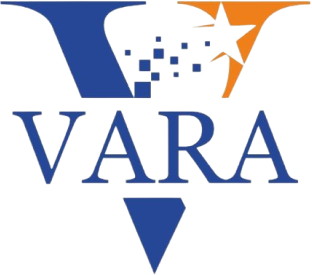In today’s fast-paced world, businesses require real-time, accurate data on their assets’ locations and movements to stay ahead of the competition. Many organizations and industries have implemented RFID (Radio Frequency Identification) due to the necessity of tracking and tracing assets. The focus of this blog is to explore the functioning of RFID asset tracking systems, along with their benefits and other relevant areas.
RFID Tracking System: An Overview
An RFID asset tracking system comprises two primary components:
RFID tags and readers
Assets that require tracking are affixed with RFID tags, while readers are located at different locations within the facility or supply chain. Through radio waves, the readers can communicate with the tags, facilitating real-time identification, location, and tracking of the assets.
RFID tags are an integrated circuit, an antenna, and a memory chip. The integrated circuit and the antenna work together to send and receive radio signals, and the memory chip stores information about the asset, such as its unique identification number, location, and other relevant data.
When an RFID tag enters the range of a reader, the reader sends a radio signal to the tag, which responds with its identification number and other relevant data stored in its memory chip. The reader then sends this data to the central database, which stores and processes the information in real time. This process continues as the asset moves through different areas and comes within range of other readers.
The RFID tracking system consists of three components:
RFID tags, RFID readers, and RFID software
RFID tags are small, passive devices that are attached to the assets that need to be track and trace. These tags contain a microchip and an antenna. The microchip stores the unique identification code for the assets, which is transmitted back to the RFID reader by the antenna.
RFID tags come in two types: Passive and Active
Passive RFID tags do not have a power source and rely on the radio signal from the RFID reader to activate and transmit their identification code. Passive tags are smaller, cheaper, and have a longer lifespan than active tags. They are used for asset tracking in warehouses and retail stores.
Active RFID tags have a power source and can transmit signals to an RFID reader from a greater distance (up to a distance of 150 metres), depending on the frequency level. Active tags are larger, more expensive, and have a shorter lifespan than passive tags. These devices are commonly used for asset tracking in outdoor environments, such as construction sites and ports.
RFID Readers are devices designed to scan the RFID tags attached to assets. The reader sends out a radio signal that activates the tag, causing it to transmit its identification code back to the reader. The reader then captures the identification code and sends it to the RFID software for processing.
There are two types of RFID readers: handheld and fixed
A portable device known as a handheld RFID reader can scan tags while being carried around. Asset tracking is often used in warehouses and retail stores.
Stationary RFID readers, known as fixed readers, are installed in a particular location and are commonly used for asset tracking in manufacturing plants and distribution centres.
RFID Software manages the data collected by the RFID reader. The software receives the identification code from the reader and stores it in a database. The software assists in tracking the movement and location of the assets, generates reports, and sets up alerts for when an asset moves outside a designated area.
The software interfaces with other systems like inventory management, supply chain management, and enterprise resource planning (ERP) systems. This integration enables real-time tracking of assets, which helps organisations optimise their operations.
RFID asset tracking systems monitor and manage the movement of goods in the supply chain. By tagging each product, pallet, or container with an RFID tag, companies can track and trace the location, status, and condition of assets in real-time. This information helps businesses optimise their logistics operations, reduce the risk of theft or loss, and improve customer satisfaction.
Benefits of an RFID Tracking System
RFID tracking systems offer numerous benefits to businesses, such as
Real-time Tracking: RFID tracking systems offer real-time tracking of assets, which helps businesses quickly track and trace throughout the supply chain.
Improved Visibility: RFID tracking systems provide businesses with greater visibility into their supply chain operations, which also helps them optimise their operations and improve their overall efficiency.
Reduced Labour Costs: RFID tracking systems eliminate the need for manual tracking of assets, which reduces labour costs and minimises the risk of errors.
Improved Accuracy: RFID tracking systems offer greater accuracy in tracking assets, which helps businesses reduce the risk of theft, loss, or misplacement of assets.
Reduced Inventory Costs: RFID tracking systems help businesses optimise their inventory levels, which helps reduce inventory costs and minimise the risk of stockouts.
Conclusion
In conclusion, RFID tracking systems are an essential tool for businesses that require accurate, real-time data on their assets’ locations and movements.
Join the Conversation
Receive newsletters, webinar invitations, announcements and more.

